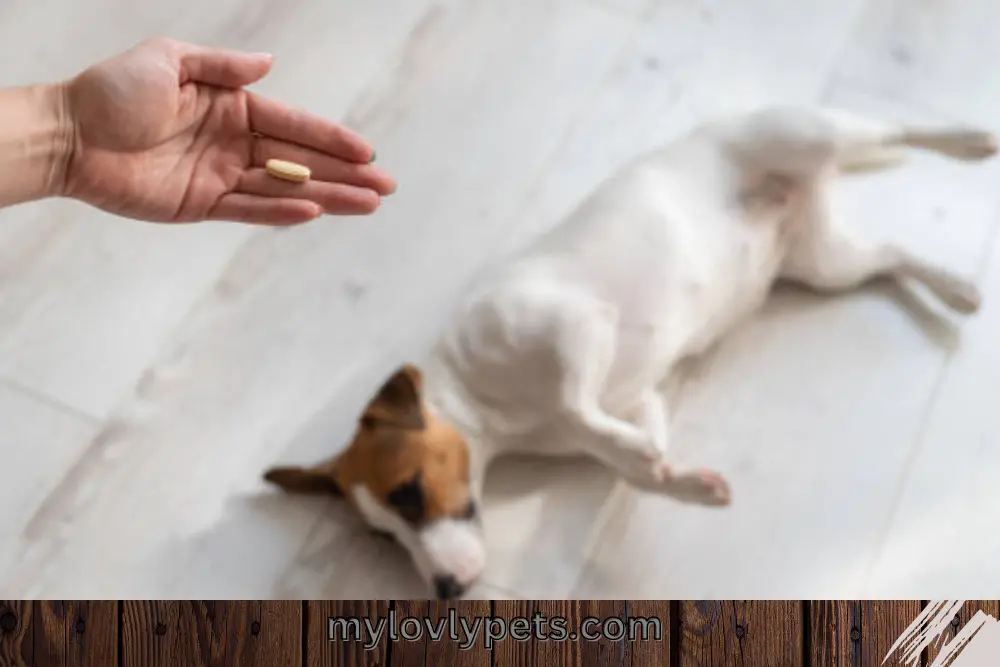
Dog Smegma Infection Symptoms Treatment
Dog Smegma isn’t a condition that’s frequently discussed, and owners who aren’t familiar with the symptoms can feel embarrassed by it. There’s no reason to avoid talking about it because the problem is so widespread among dogs.
Male dog owners must consistently monitor their pet’s health. This involves recognizing signs of smegma infection in dogs’ genital regions.
Dog smegma is typically normal and not a cause for concern unless the dog shows signs of discomfort. Common dog smegma infection symptoms include:
Genital discharge
Overzealous tongue action
Inflamed or swollen
Urinary challenges
Pain or unease
Loss of hunger
Though uncomfortable to talk about, it’s vital to grasp the causes and risks of this infection. To assist dog owners in properly caring for their animals, we have provided a concise outline of infection symptoms and dog smegma infection symptoms treatment.
What is Smegma in Dogs?
Dog smegma is a secretion found in your dog’s penis folds. This mixture, composed of dead skin cells, dried urine, and other secretions, provides an optimal breeding ground for bacteria. Neglecting to clean smegma can cause inflammation and discomfort.
To maintain hygiene, dog owners should regularly clean the smegma that accumulates on their pet’s penis. Following these guidelines can ensure your puppy’s health and prevent any infections or discomfort in that area.
Dog Smegma Infection Symptoms
While smegma in dogs is typically normal, a sudden or significant increase could indicate an underlying medical issue.
Excessive smegma production in dogs could indicate an infection or other medical problem. Monitor your dog’s smegma for any abnormal changes in color, odor, or other characteristics, as these could be signs of a potential issue.
Male dogs lick their genitals to clean excess smegma. Excessive dog licking may suggest an infection or medical problem leading to increased smegma production.
Various medical conditions can affect your dog’s smegma. Infections in your dog’s reproductive tract can alter its smegma. Excessive smegma can indicate urinary tract problems such as urethral stones, bladder stones, or tumors. Skin allergies can impact your dog’s smegma.
To address concerns about a dog smegma infection, schedule a veterinary appointment.
During the veterinary check-up, your dog’s genitals will be examined as part of a thorough physical examination. Additional testing may be recommended, such as bloodwork, urinalysis, or X-rays. Your veterinarian can detect any health problems related to your dog’s smegma changes.
What is Considered Normal for Dog Penis Health?
To identify any issues with your dog’s penis, being familiar with what is considered normal is crucial.
The outer part of a dog’s penis is usually the prepuce or sheath, which includes the surrounding skin and tissues. The penis is covered with a moist and brightly colored mucous membrane.
Dogs may have a small amount of yellowish-white or slightly green-tinged discharge around the opening of their prepuce. Smegma is a regular occurrence.
The canine penis remains rigid even when not erect because of a bone called the “os penis.”
The “bulbus glandis” refers to a pair of glands near the penile base. When a dog becomes aroused, the bulbus glandis swells with blood, resulting in two visible bumps.
Neutered dogs can still experience erections; in some cases, the entire engorged penis and bulbus glandis may protrude outside the prepuce.
A dog’s erection can last anywhere from a few minutes to an hour.
What Causes Excessive Smegma in Dogs?
Dog smegma, a buildup of germs, sebum, and dead skin cells, can irritate and inflame the genital area. The dog may have swelling, redness, and pain.
Poor hygiene, hormonal imbalances, allergies, or medical conditions can lead to excessive dog smegma. Smegma is not a concern unless it starts to cause problems.
Here are a few potential causes of a dog’s excessive smegma.
UTI
Urinary tract infections often trouble male dogs with excessive smegma. The dog seems to be in pain and struggling to urinate.
This problem is easily fixed by taking the pet to the veterinarian. They will provide medication and suggest an improved grooming routine to resolve the issue.
Injury and Sanitation
Neglecting cleanliness and sustaining injuries can result in an accumulation of smegma. Dogs frolicking in unsuitable outdoor spots can lead to infections.
Outdoor injuries in dogs can cause swelling, discomfort, and excessive smegma.
Allergies
Some dog breeds are more prone to allergies, leading to persistent and excessive discharge. Common skin allergies can make it worse, and it is often most evident before grooming.
To identify their dog’s allergies, dog owners should seek guidance from a veterinarian. Identifying their allergy status will expedite the search for the cause of excessive smegma.
Dog Smegma Infection Symptoms Treatment

A sick Jack Russell Terrier waits on the wooden floor for medicine.
To treat smegma in dogs, follow these steps:
1. Gently clean the affected area: Use a mild, pet-friendly cleanser to clean the smegma buildup on your dog’s genitals. Be careful not to cause any irritation or discomfort to your dog.
2. Rinse thoroughly
No treatment for normal dog smegma is needed as it does not indicate any illness.
If your dog frequently licks its genital area and there is blood, pus, or urine in the discharge, as well as a foul smell, it is essential to take your dog to the vet for treatment.
The vet will determine the cause of the dog’s unusual smegma through a physical examination and provide a customized treatment.
If a foreign object causes dog smegma, your vet will likely remove it. Antibiotics and painkillers may be prescribed if the cause of the condition is an infection or inflammation.
Dog smegma caused by tumor overgrowth may require surgery for removal. Smegma in dogs resulting from injuries is treated by healing the wound.
Antiseptic lotions can be used daily in the genital area as a topical medication.
How to Prevent Dog Smegma?
To prevent smegma in dogs, follow these steps:
1. Regularly clean your dog’s genital area with a gentle, pet-safe cleanser.
2. Ensure that your dog’s genital area is kept dry and free from moisture.
3. Avoid using harsh soaps or chemicals on your dog.
Preventing dog smegma entirely is impossible as it is a natural occurrence in the dog’s penis. It can be beneficial during mating as a natural lubricant.
Neutering can decrease smegma production in dogs and prevent habits like the excessive licking of the genitalia. It may also help prevent illnesses such as prostate disorders.

Indoors, a cocker spaniel puppy sits on the floor and avoids eye contact.
Some veterinarians prescribe green tea extracts or supplements for their antibacterial properties to prevent infections. This reduces harmful bacteria in your dog’s genitals.
Washing your dog’s genitals with warm salt water can help prevent smegma buildup.
However, if other signs of infection are evident, visiting a vet and taking your dog in for an examination is crucial.
In some cases, these approaches prove helpful. Nonetheless, it would be best if you got pet insurance to cover the cost of veterinary care in case your dog needs to be hospitalized.
What If Dog Smegma Smells Bad?
The odor of regular dog smegma may be pungent, much like that of a copper trail. Some people say it smells like fish.
If your dog’s smegma smells bad, it could be a sign of infection, and you should take them to the vet.
Does Dog Smegma Go Away?
Intervening with dog smegma is unnecessary as it naturally recurs due to the presence of mucous membranes in the dog’s penis.
Regularly cleaning a dog’s penis is essential for maintaining proper hygiene and preventing dryness and crustiness.
Suppose you see any signs of infection in your dog’s penis, like trouble holding urine or the presence of pus, blood, or urine in the smegma. In that case, it’s essential to seek veterinary advice immediately.
Do Neutered Dogs Still Produce Smegma?
Even after neutering, male dogs will still produce smegma, which cannot be prevented entirely.
Neutering can help decrease your dog’s smegma production.
How Long Does Smegma Take to Go Away in Dogs?
The duration of dog smegma’s persistence remains uncertain and unclear. The field of veterinary medicine lacks information on this topic because it is not considered a medical concern requiring treatment. If dog smegma isn’t cleaned, it can persist for weeks or months.
The accumulation of oils, sweat, and other secretions causes genital buildup in dogs. While both male and female dogs can experience it, it is more prevalent in males due to their physical anatomy.
Consider using a gentle pet shampoo if necessary. When faced with excessive buildup, it’s wise to consult your veterinarian for guidance on what to do. Don’t worry about the occasional smegma on your furry buddy.
Maintain cleanliness and stay alert for any unusual odors or changes in the area.
How to Clean Dog Smegma Off Furniture?
Acting quickly is crucial when dealing with pet stains. The faster you respond, the greater your chances of eliminating the stain.
Here are two things you can try to fix yourself:
Method #1:
Apply a generous amount of vinegar directly onto the pet stain. Ensure the stain is completely saturated.
Then, sprinkle a small amount of baking soda onto the stain, making sure to follow this sequence. As soon as you apply the fix, you’ll hear it taking effect.
Place a bowl over the stain as a reminder to allow it to dry for 1-2 days.
Method #2:
To combat pet stains, particularly urine stains, try using liquid dishwashing detergent.
Blot the stain with a disposable towel.
Mix 1 cup of warm water with about ¼ teaspoon of dishwashing liquid (avoid using laundry detergent or hand soap).
Pour the mixture into a spray bottle and spray it onto the affected area.
Let the mixture soak the stain for a few minutes. To remove the stain, use a shop vac or a cotton cloth.
Repeat steps 1-4 until the stain vanishes, then rinse with warm water.


